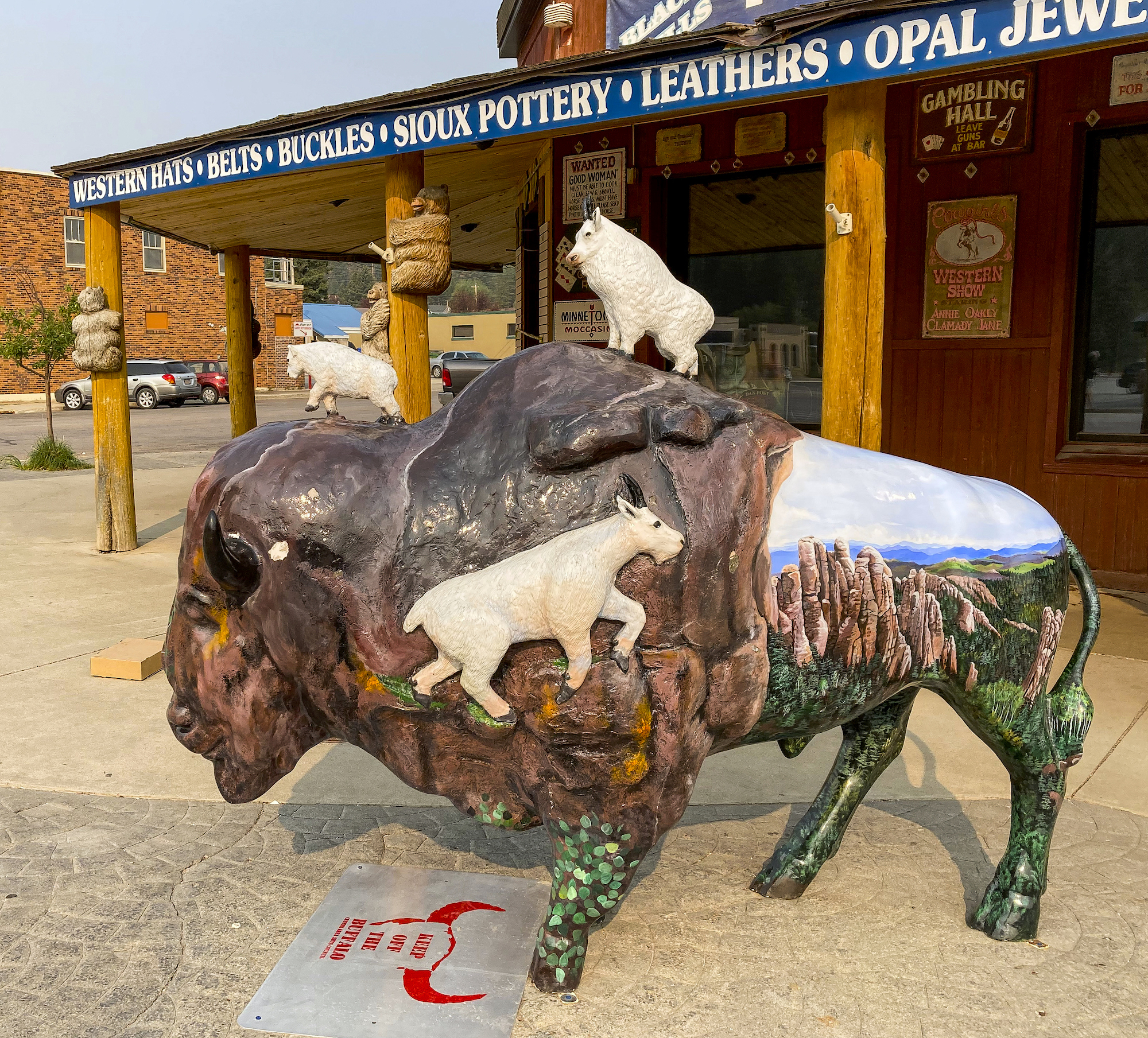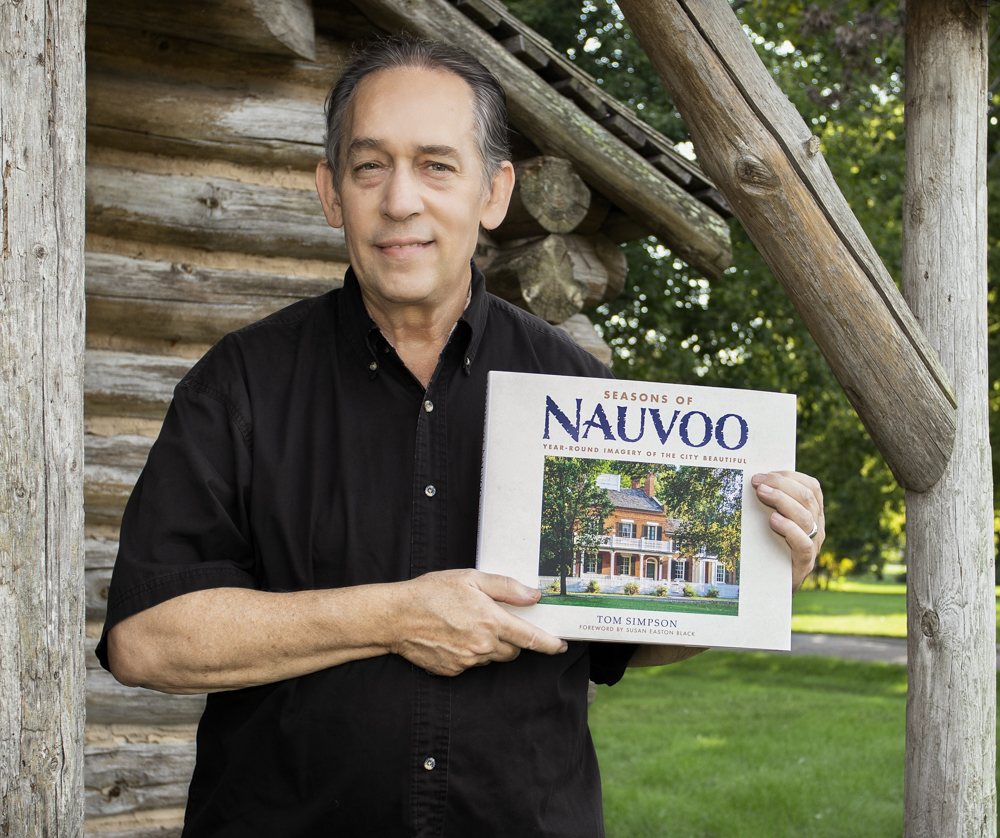We Found History, Art, and Wild West
What did we find in the few hours we were in Custer, South Dakota? We found history of the region is a prominent part of this friendly little town.
Pulling into Custer after dark, we didn’t actually see the town until the next morning. As a result, our exploration was limited to the main highway and a few surrounding streets.
However, we immediately noticed 3 things that made Custer memorable—historic buildings and modern art mixed with a Wild West feel.
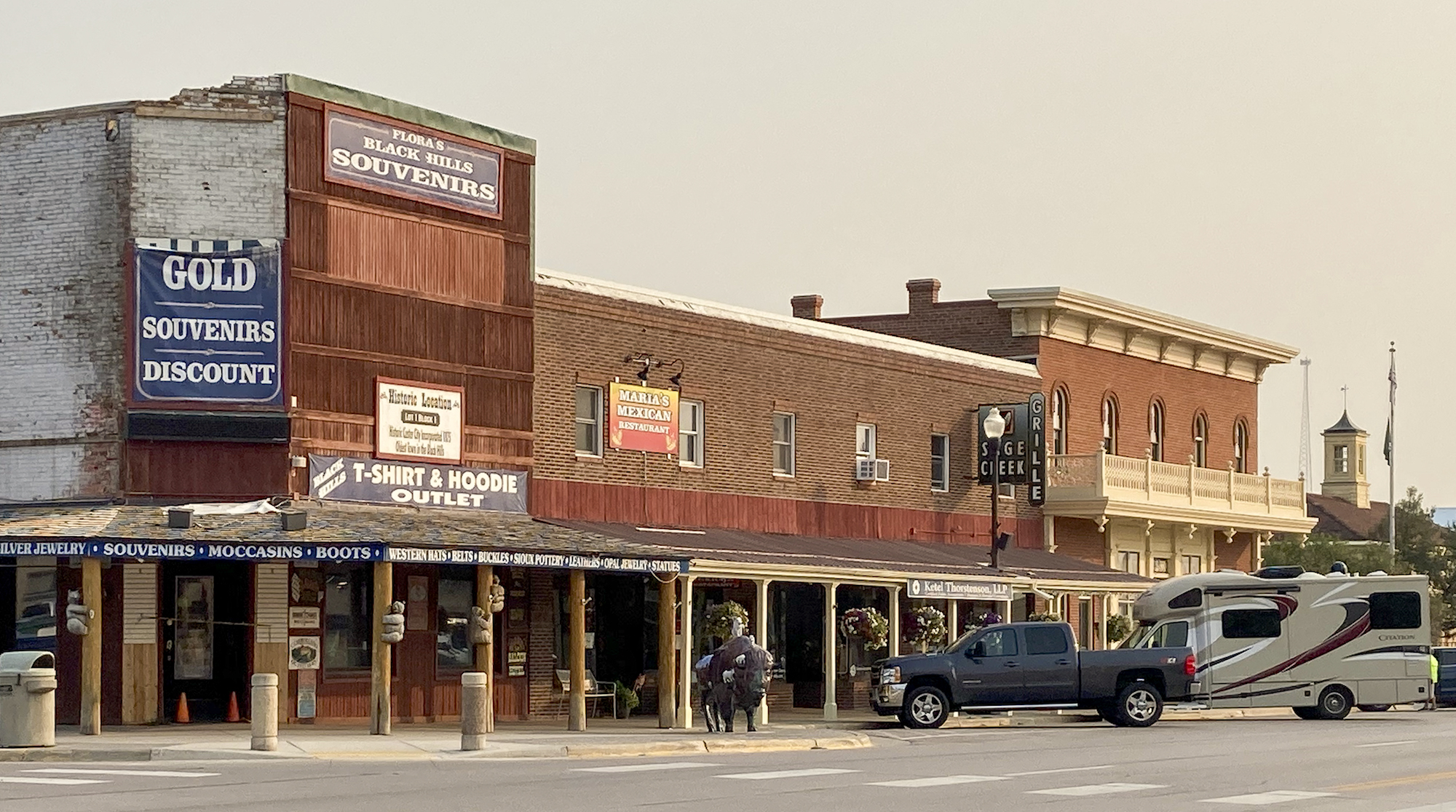
View of one block in Custer's downtown area.
Location:
Southwestern corner of South Dakota, in the Black Hills
Founded: 1875
Population: 1,900+
Elevation: 5,315'
Contact:
605-673-2244
(Custer Chamber of Commerce)
Website:
CusterSD.com
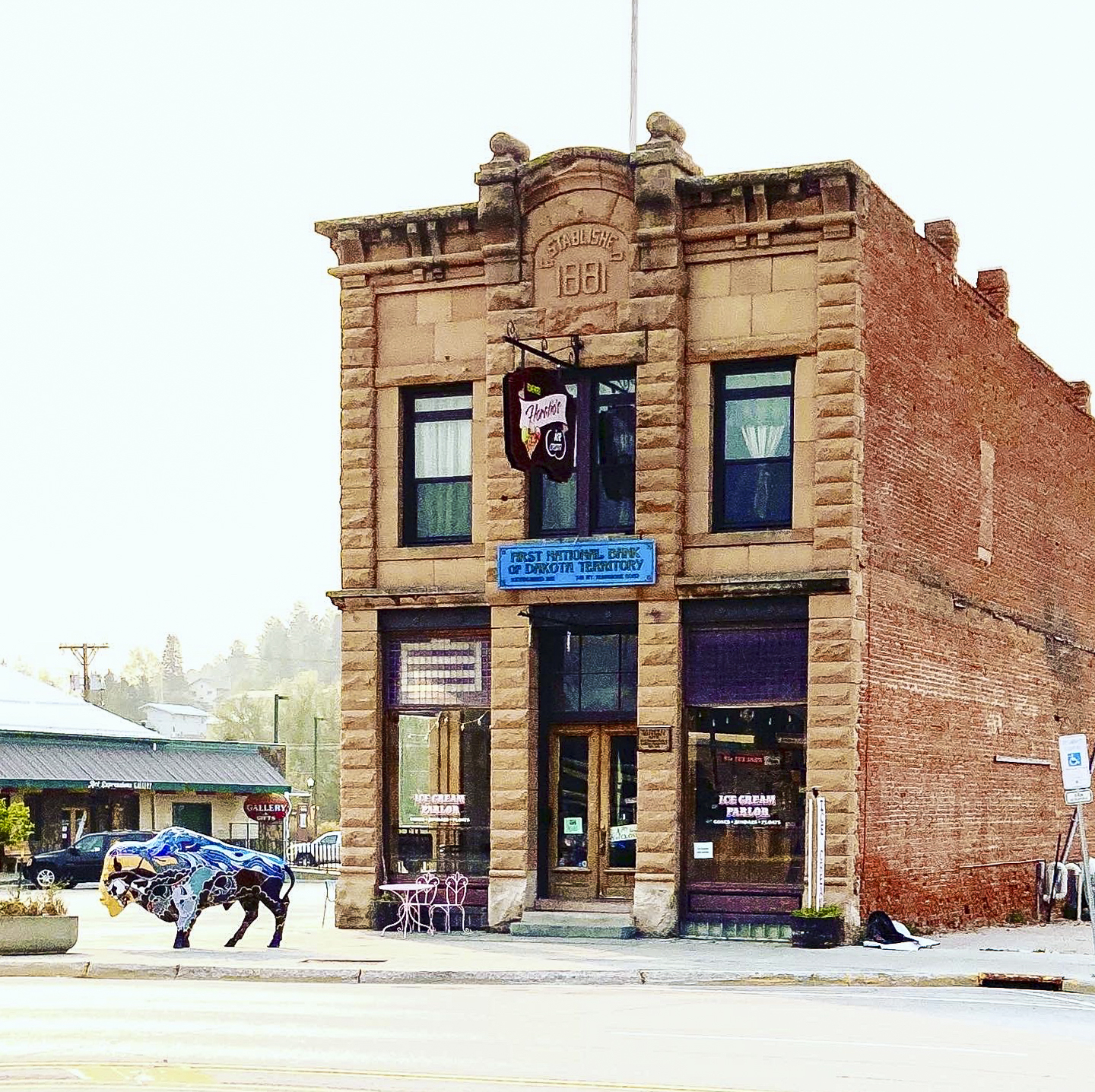
The 1881 First National Bank Building is now home to Horatio's Homemade Ice Cream.
Adaptive Reuse of Historic Architecture
Our first impression of Custer was the past matters. Rather than tear down old buildings, this historic little town has adapted many for reuse. For example, the old First National Bank building, still standing after 140 years, currently houses an ice cream parlour.
Because our trip was short, we missed seeing Custer’s oldest building—Dr. Flick’s cabin built in 1875. It was just down the street near the 1881 Courthouse building. Both buildings are now used as museums
By the way, we found out Custer county is #4 in the state for buildings and landmarks on the National Register of Historic Places. Good indication history is important to the locals.
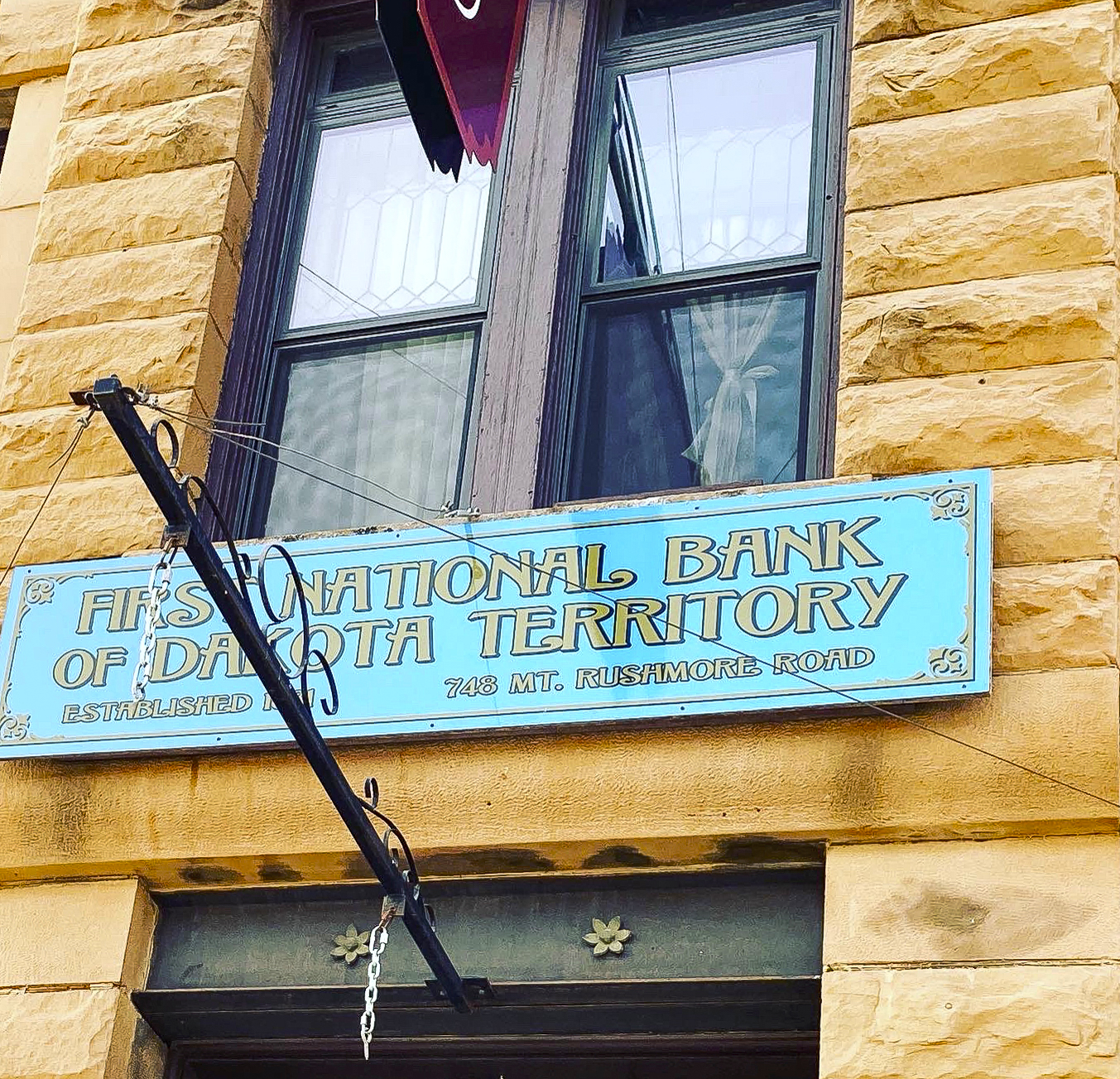
A little history on a sign—Custer was once part of the Dakota Territory prior to statehood in 1889.
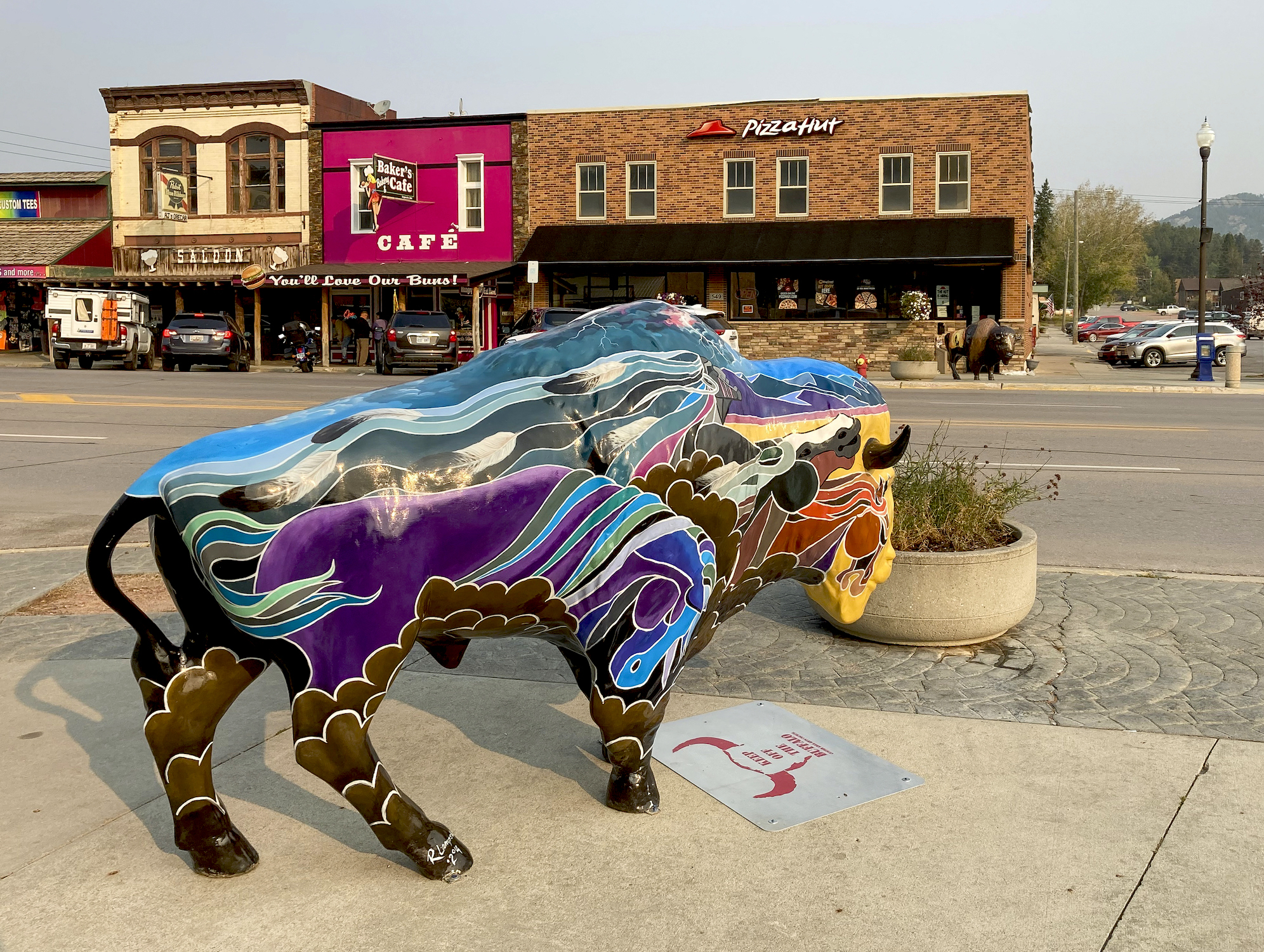
One of the smaller size statues is covered from head to toe with artistic swirl.
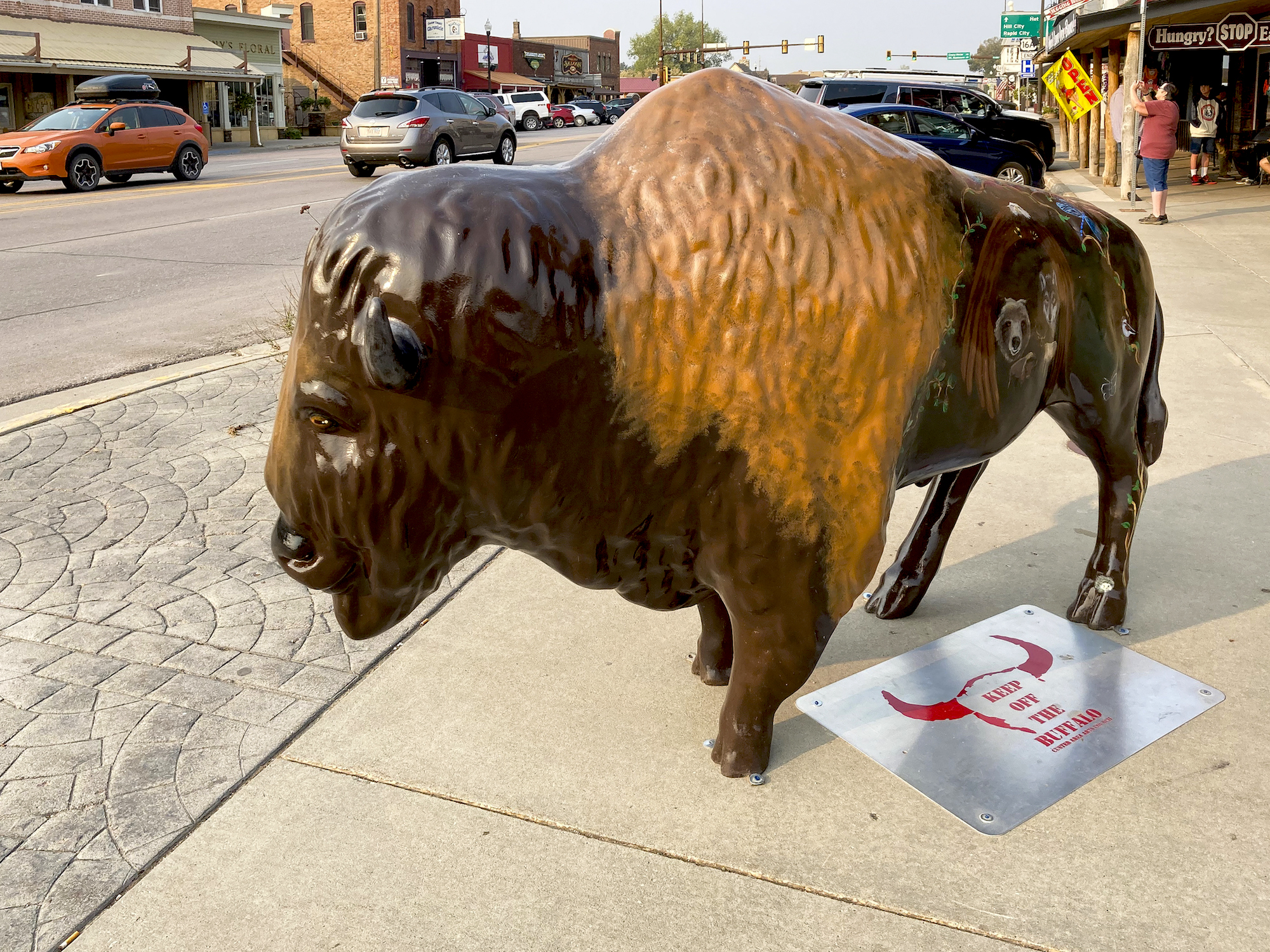
Most of the art on this buffalo is located on the hind quarters.
Buffalo Art Scattered Around Custer
We also noticed art matters to the local residents. Scattered throughout town, we found history combined with art in the form of buffalo statues. Each one was unique and totally different from the others.
Curious about their origin, I called the Custer Chamber of Commerce to ask a few questions. I found out the buffalo are all original pieces of art. They were part of a community art competition to be sold at auction. Local businesses purchased many of the pieces.
However, one family in particular purchased at least a dozen. Their buffalo “herd” winters in the family’s yard and migrate before summer to the downtown area.
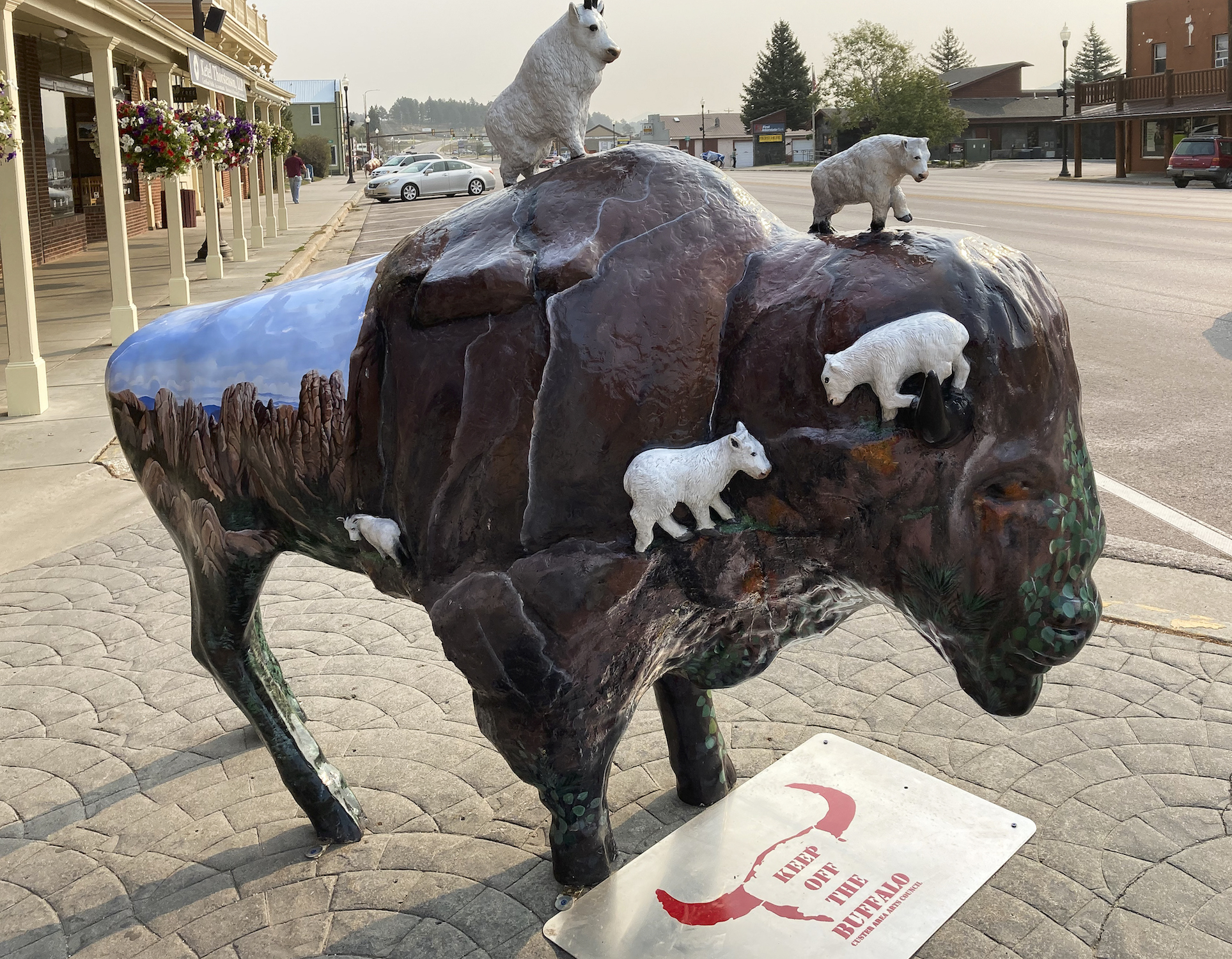
Bears and Black Hills cover this buffalo. This is my favorite!
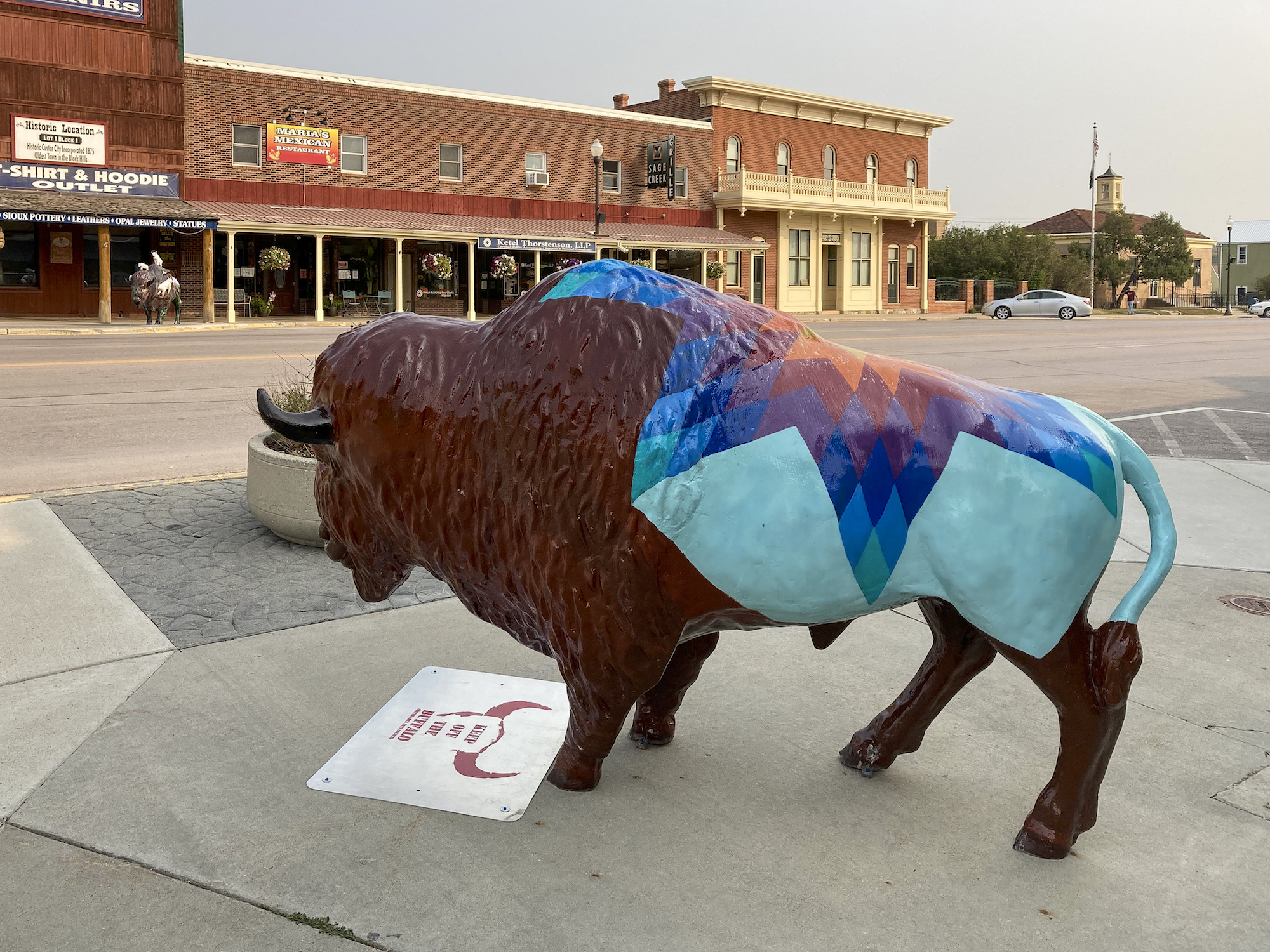
Signs in front of each statue remind visitors to look, not touch and especially don't climb on for a ride!
Small Town with a Wild West Feel
Custer has small town charm but with a Wild West feel. Exteriors of many places to sleep, eat, and shop that we saw had a western theme.
However, they weren’t over-the-top. The town isn’t “touristy” like others we passed through in the region. It’s just enough to remind you that you are in the west.
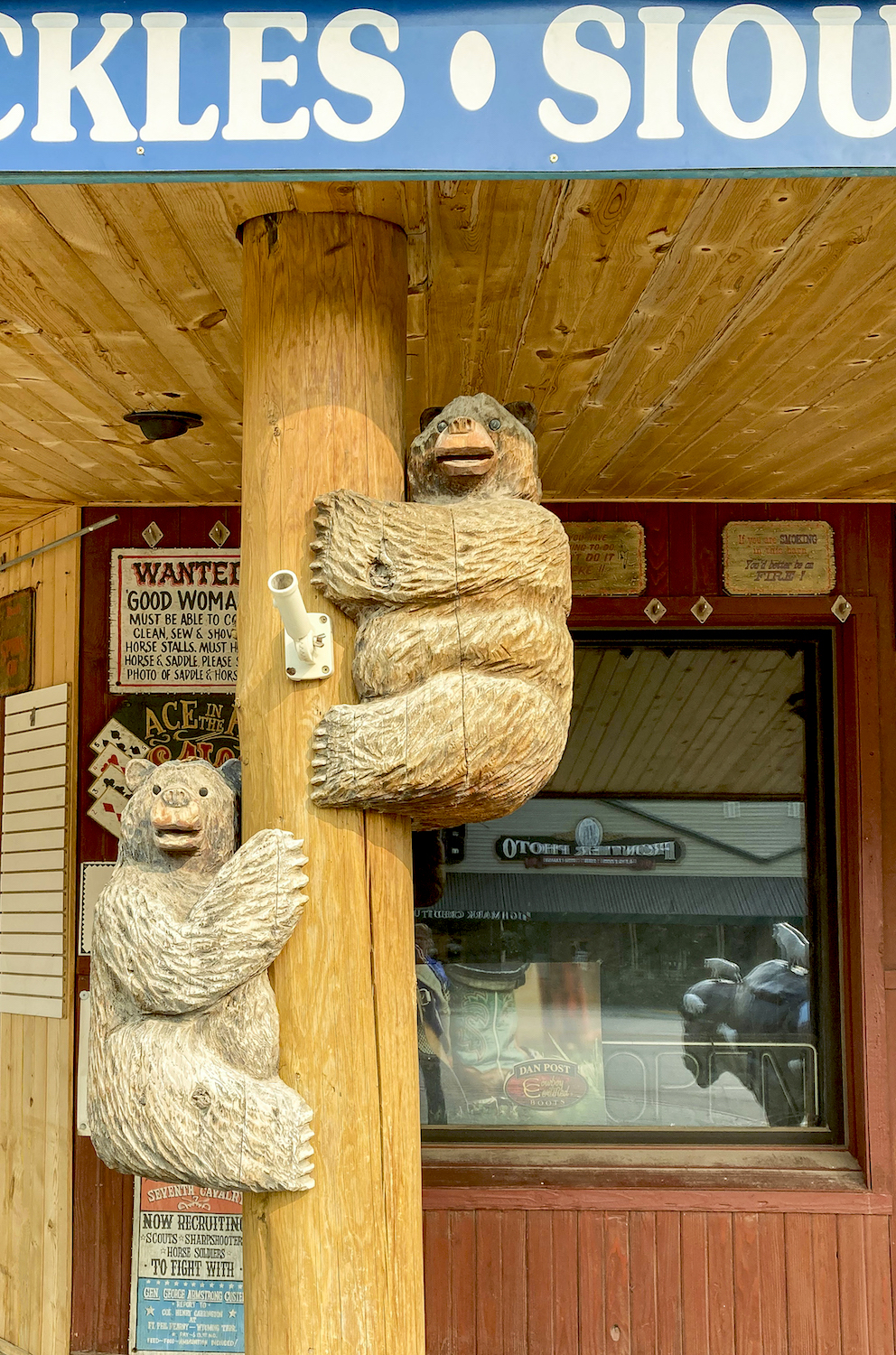
Carved bears, rough wood, and vintage signs outside a gift shop add a western flavor to downtown Custer.
More to Custer than Meets the Eye
There is much more to Custer, than meets the eye. A quick drive through doesn’t do it justice. And, we barely made a dent in the area attractions to-do list!
The townspeople are friendly, welcoming, and helpful. They should be after greeting guests for nearly 150 years. So, plan a trip to Custer. It’s the perfect central location to stay while seeing Black Hills area attractions.
We promise—it will be memorable and worth your time.
About Custer, South Dakota
The oldest settlement in the Black Hills had its start in 1874 when the U. S. government sent Lieutenant Colonel George Armstrong Custer to explore the region. During the “Black Hills Expedition,” gold was found and a gold rush ensued.
Larger gold strikes were found in nearby areas and Custer (originally named Stonewall) was almost abandoned by 1876. The mining town survived by basing their economy on industrial minerals and subsequently tourism in its later years.
Custer was known in the 1960’s as the “buffalo capital of the world.” Nearby Custer State Park has a buffalo roundup each September.
Now known as a “foodie” town, Custer has wonderful restaurants, along with many galleries and gift shops to visit
You can expect cool mornings and warm afternoons during summer. Most rainfall is during spring and early summer. Winter climate has extreme variations.
Wanting more ideas on relaxing, playing or learning?
Check out our "Things to Do" page for other Worthy Detour stops.

